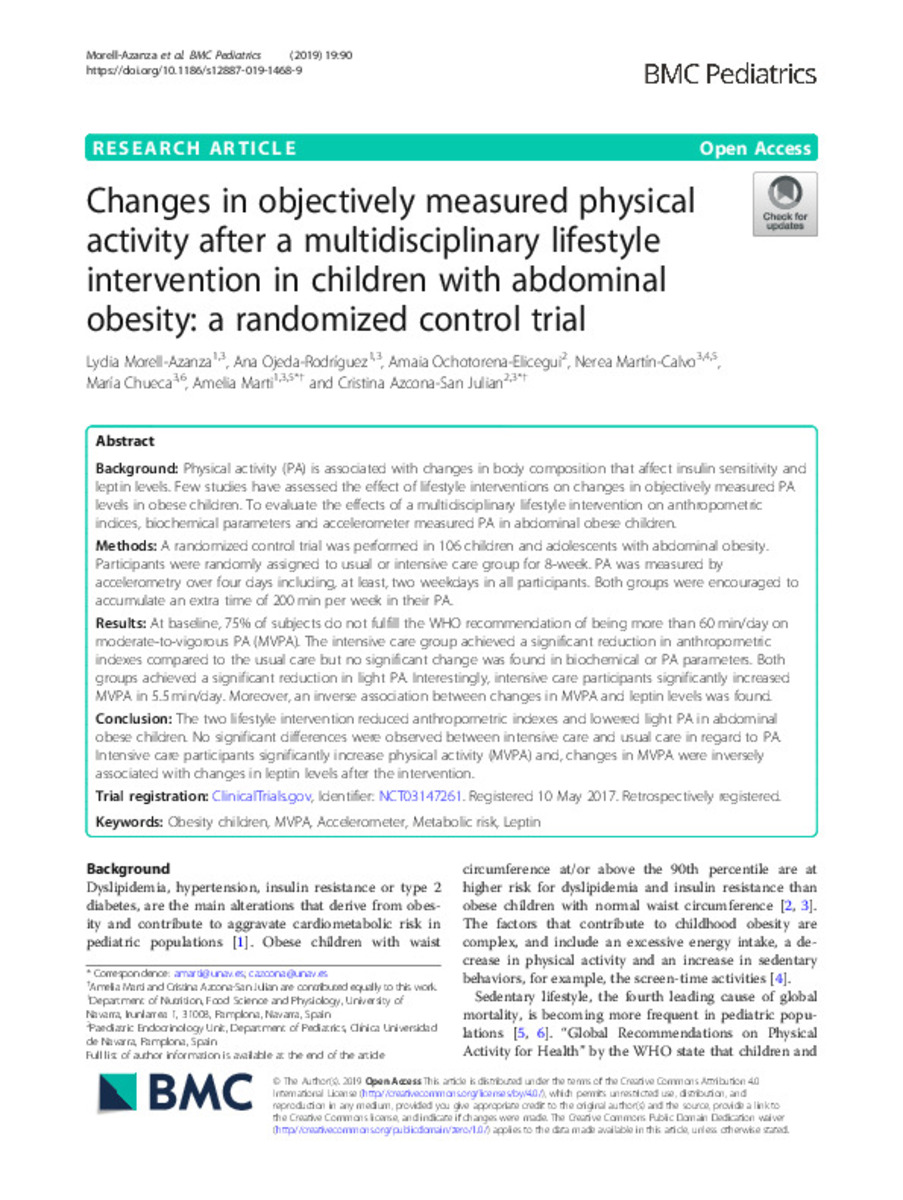Changes in objectively measured physical activity after a multidisciplinary lifestyle intervention in children with abdominal obesity: a randomized control trial
Palabras clave :
Materias Investigacion::Ciencias de la Salud::Nutrición y dietética
Obesity children
MVPA
Accelerometer
Metabolic risk
Leptin
Fecha de publicación :
2019
Editorial :
Springer Science and Business Media LLC
Nota:
This article is distributed under the terms of the Creative Commons Attribution 4.0 International License (http://creativecommons.org/licenses/by/4.0/), which permits unrestricted use, distribution, and reproduction in any medium, provided you give appropriate credit to the original author(s) and the source, provide a link to the Creative Commons license, and indicate if changes were made. The Creative Commons Public Domain Dedication waiver (http://creativecommons.or /publicdomain/zero/1.0/) applies to the data made available in this article, unless otherwise stated.
Cita:
Morell-Azanza, L. (Lydia); Ojeda-Rodríguez, A. (Ana); Ochotorena-Elicegui, A. (Amaia); et al. "Changes in objectively measured physical activity after a multidisciplinary lifestyle intervention in children with abdominal obesity: a randomized control trial". BMC Pediatrics. 19 (90), 2019, 1 - 8
Aparece en las colecciones:
Estadísticas e impacto
0 citas en

0 citas en

Los ítems de Dadun están protegidos por copyright, con todos los derechos reservados, a menos que se indique lo contrario.








